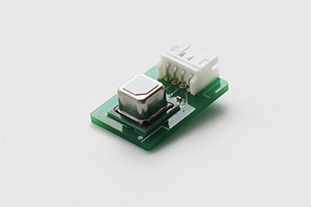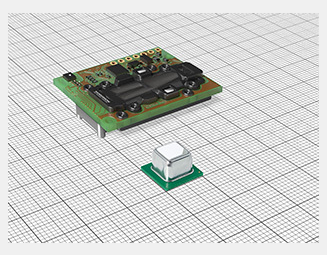Alpine develops air environment sensor modules that help prevent and control the new crown epidemic
2021-06-09
Monitoring the CO2 and temperature and humidity parameters of the surrounding environment through high-precision sensors
- Alps Alpine Co., Ltd. (TOKYO: 6770, President and CEO: Toshihiro Kuriyama, Headquarters: Tokyo, hereinafter referred to as "Alps Alpine") has developed a system for monitoring the carbon dioxide (CO2) concentration and temperature and humidity parameters of the surrounding environment High-precision air environment sensor module. Contribute to the prevention and control of the new crown epidemic by monitoring indoor ventilation and temperature and humidity in places such as restaurants and entertainment venues. In addition to CO2 and temperature and humidity sensors, this module will also integrate sensors for detecting PM2.5, volatile organic compounds (VOC) and alcohol. We will continue to conduct market research and extend it to a wide range of uses such as the energy-saving function of white goods to help curb global warming and the anti-drowsy function of driving safe travel. The product plans to start mass production in 2022.
- R & D background
- Although there has been progress in the development of new coronavirus vaccines, the global epidemic has shown no signs of subsiding. The Ministry of Health, Labour and Welfare of Japan pointed out that there are three common characteristics in places where group infections are found-"in a confined space with poor ventilation", "multiple people gathering", and "close distances (reach out for each other). Distance) to talk or speak". In order to effectively prevent and control, in business places where people gather in restaurants, entertainment venues, etc., the number of people will be restricted, business hours will be shortened, alcohol disinfection, body temperature measurement, etc., and ventilation will be ensured.
- Especially in terms of ventilation, if the doors and windows are always open to maintain ventilation, the indoor temperature and humidity will be disturbed, which may affect the comfort of the living environment. But on the other hand, if regular ventilation is performed mainly by adjusting temperature and humidity, the problem is that it is difficult to judge whether the ventilation level can really effectively prevent the spread of the virus. Therefore, there is an increasing demand for high-precision CO2 sensors required to grasp the optimal ventilation timing and high-precision temperature and humidity sensors required to restore the temperature and humidity disturbed by ventilation to a comfortable state.
- The field of sensor technology is where Alps Alpine`s advantage lies. So far, sensors have been developed to detect changes in parameters such as CO2, temperature and humidity, air pressure, load, and current, and are used in automobiles, consumer electronics, smart phones, industrial equipment, and more. In the product. Using this expertise and experience, Alps Alpine has developed this air environment sensor module to help prevent and control the new crown epidemic
-

- R & D overview
- The air environment sensor module released this time is a product developed in cooperation with Sensirion*1. The module can detect the CO2 concentration and temperature and humidity level in the surrounding environment with high accuracy. While maintaining a comfortable indoor space, it also contributes to preventing the spread of the new coronavirus.
- Currently, the CO2 sensors on the market widely use non-dispersive infrared absorption spectroscopy (NDIR: Non-Dispersive Infrared absorption spectroscopy), the principle of which is to determine the CO2 concentration based on the change in infrared light absorbed by the CO2 molecules between the infrared transmitter and the receiver. The large size of the sensor is a problem because the detection accuracy depends on the path length of the infrared rays. In addition, in NDIR, there is a risk of detection errors caused by the misalignment of the infrared output shaft during assembly design or product transportation.
- The CO2 sensor equipped with this module uses Photo Acoustic Spectroscopy (PAS: Photo Acoustic Spectroscopy) (see Figure 1 below). The working principle is to detect the CO2 concentration by collecting the vibration sound emitted by the CO2 molecule when the CO2 molecule is in contact with the emitted infrared light. Since the detection accuracy does not need to rely on the path length of infrared rays, the size of the sensor can be greatly reduced while realizing high-precision measurement to only 10.1 × 10.1 × 6.5 mm. In addition, since there is no need to arrange a detector on the opposite side of the infrared transmitter like the NDIR sensor, it will not be affected by external shocks and has higher stability.
-

- Using the expertise and experience accumulated in sensor development for many years, Alps Alpine can, in addition to providing customers with CO2 and temperature and humidity sensors, can also integrate VOC and alcohol sensors for selection according to customer requirements. While reducing the labor of client assembly design, functions can be added according to the purpose to meet diversified needs.





